Turfing lawn for lettuce, micro-clover or even polypropylene greens
Edible gardens, xeriscaping and fake turf gaining ground as Canadians rethink the lawn
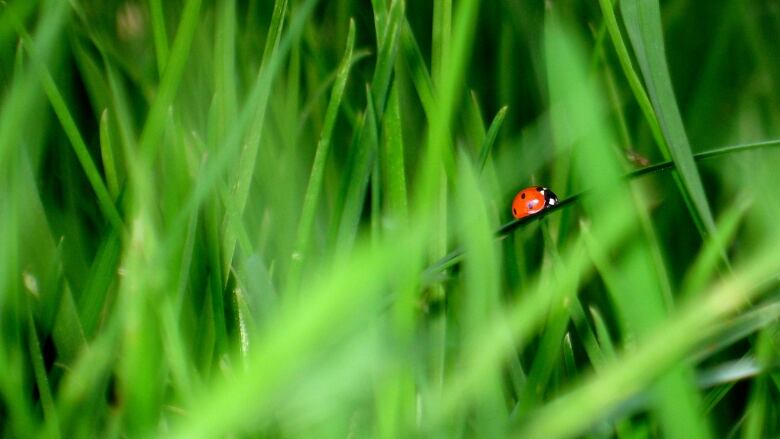
It's the time of year when Canadians start watering, weeding and mowing the green, green grass of home.
North America has long had a love affair with the lawnas a symbol of domestic pride and the scene of summer fun. But is that relationship souring?
Lawn alternatives gaining ground
Increasing concerns about climate change, water shortages and the environmental impacts of fertilizers and pesticides havesome Canadians rethinking the conventional lawn and considering alternatives like food gardens, fake turf orxeriscapeslandscaping with low-water needs.
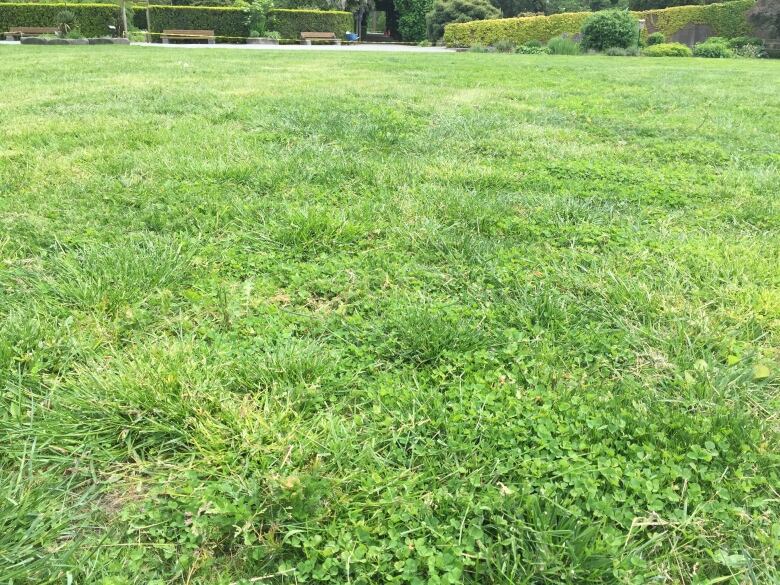
Even the traditional uniform "carpet" of Kentucky Bluegrass is beginning to evolve, as heartier micro-clovers and tallfescue grasses enter the market as an answer to drought and pests.
A troubled relationship
The conventional turf grass lawn began to take hold in North American during the post-Second World Warreal estate boom.
"Suddenly people were homeownerslike never before ... so these landscapes and suburbanization just mushroomed," saidPaul Robbins,author of Lawn People: How Grass, Weeds and Chemicals Make Us Who We Are.
Turf grass wasan easyway to for developers tofill up the tracts of land surrounding these new houses, butlawnsproved to be incredibly difficult for homeowners to manage in the decades that followed.
As I've learned about birds and insects, and the inter-relationships, when I look at a lawn like this, I see diversity, and that to me is beautiful.- EganDavis, UBC Botanical Garden Horticulturalist
"Once you have a lawn,you are expected to mow it, you have to keep it green," says Robbins. "It isn't just having grass. It's having a nice, well-maintained landscape that doesn't look overrun and give you frowns from your neighbors."
That can be costly, in more ways than one.Canadians spent more than$2billion on lawn and garden supplies in 2015. At the same time water shortages in parts of North America, including most of British Columbia in 2015,led some municipalities to reconsiderthe perpetually green lawn.
Robbins, who is also the director of environmental studies at the University of Wisconsin-Madison, says partsofCalifornia and Arizonaoffer"lawn buy-backs" where homeowners get a rebatefor every inch of turf they take out.
Trading turf for turnips
Anna Galvin is one of an increasing number of Canadians who've opted toexchangeall or part of their lawn for a food garden. After fighting a losing battle with the European chafer beetle, she contacted Victory Gardens, a Vancouver-based company that helps people grow food.
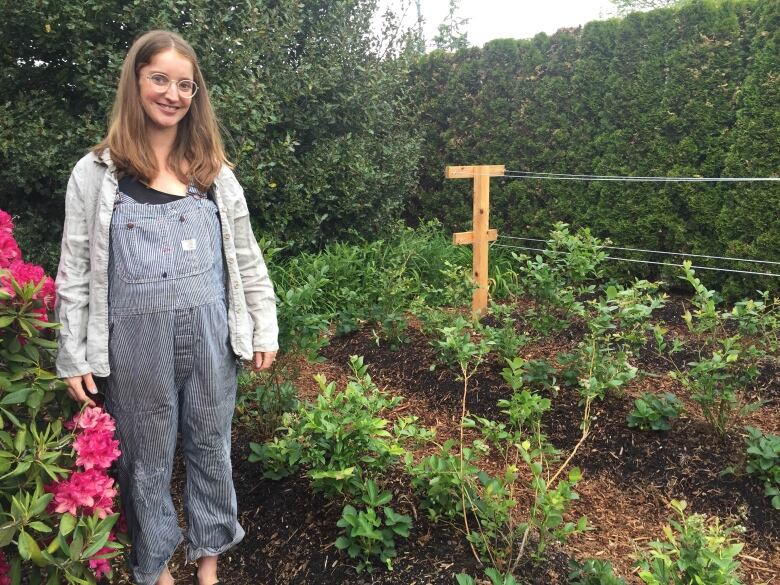
They completely replaced Galvin'sravaged lawnwith lush vegetable and herb plots, berry bushes and fruit trees, and she has no regrets.
"I don't think anyone feels good about watering a lawn just to make it look green, particularlywhen there are watering restrictions. And when you're battling beetles and a shabby-looking lawn, why not get rid of it and do something useful with your garden?" saidGalvin, who is looking forward to learning how to grow food with her 12-year-old daughter.
Lisa Girody of Victory Gardens says the company is seeing a steady increase in customers year after year, as peopleembrace less lawn and more food.
"They believe in supporting local agriculture and putting food in their bodies that they feel good about and feeding that food to their families," saidGirody.
"It's the people who are already invested in a healthy lifestyle, and one that supports them and the planet."
Plastic paradise?
For people who want the look of the lawn but not the hassle, artificial grass is becoming an increasingly popular option. Lawrence McClure of Syn Lawn Vancouver says the company went from 180 home installations a fewyearagoto over 450 last year.
"The technology has come a long way in the last 15 years," saidMcClure, who admits a synthetic lawn is not for everyone. "Every year it gets more and more popular, as people become aware of the business."
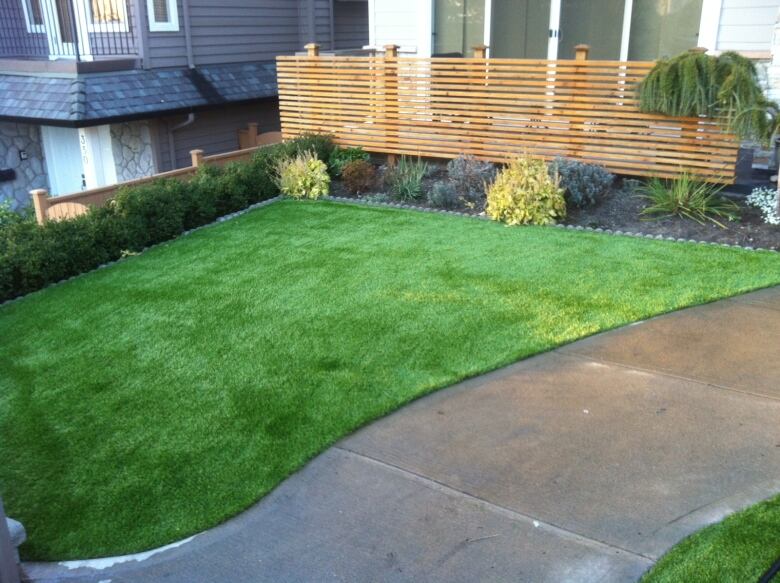
McClure saidthe polypropylene and nylon surfaces are popular with customers who are looking for a permanent solution tochafer beetle and pet damage. A 650-square-foot lawn can cost between between $7,000 and $8,000, which is what McClure estimates the average homeowner spends in a six-year period on a conventional lawn.
Redefining expectations
Landscaper and educatorEgan Davisthinks North Americans need to redefine whatthey expect from their yards.
"It's astonishing how much water a lawn and garden takes, and it doesn't need to be that way," saidDavis,head of horticultural education at the UBC Botanical Garden.
Herecently installedlow-maintenancexeriscapesfor clientswho no longer wanted put water and time intoa conventional lawn.These gardens incorporate native grasses and wildflowers, alpine plants, and trees that require little-to-no water.
For those who want to keep a lawn,Davisrecommends incorporating drought-resistant micro-clover, tall fescue grasses and even yarrowplants he would have considered weeds 20 years ago.
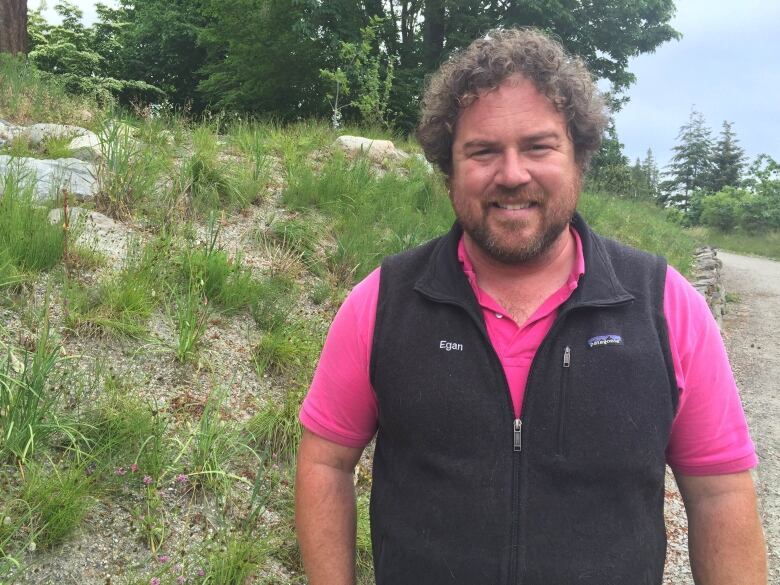
"As I've learned about birds and insects, and the inter-relationships, when I look at a lawn like this, I see diversity, and that to me is beautiful."
Defending turf
The lawnstill has staunch defenders. Turf grassmakes up the majorityof home landscapes Canada, and with good reason, according toProfessorKaterinaJordan of theGuelphTurf Grass Institute.
"It's just an amazing plant," said Jordan.
"There are not too many plants out there that you can cut and they'll grow back,that you can fall on and not get hurt, that can stop soil erosion, and that actually return water to the groundwater systemand filter pollutants."
Jordan saidturf grass also coolcities and give people a place to play.
"It's more than just about aesthetics,"said Jordan, who believes a well-maintained lawn is a sustainable lawn.
"You get so many incredible benefits from turf."
To hear the Victoria Day special Lawn Gone? about our changing relationship with our lawns, click the audio labelled: Lawn Gone?












_(720p).jpg)


 OFFICIAL HD MUSIC VIDEO.jpg)
.jpg)



























































































